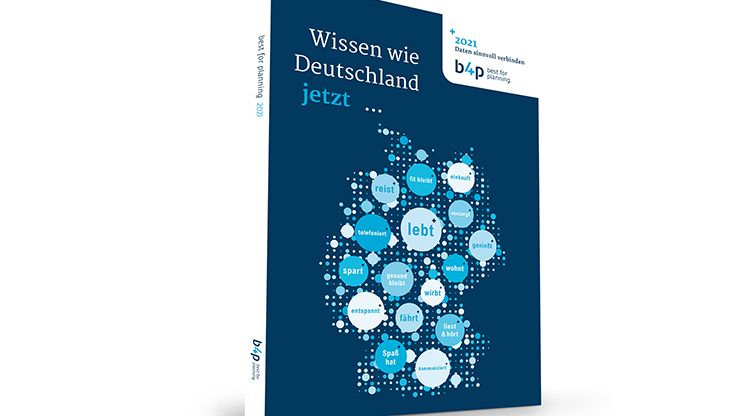

In March 2020, the Covid-19 pandemic put an abrupt end to the longstanding economic upswing in Germany overnight. For retail, the lockdowns and supply chain problems meant severe cuts and a massive pressure to change how they operated. For consumers, they led to uncertainty, restrictions and forced them to rethink how they went about their everyday life. The pandemic has since become the ‘new normal’, permanently altering shopping behaviour – and thus the demands on retailers – as a result.
The new Shopping Report by the Gesellschaft für integrierte Kommunikationsforschung (GIK) uses GIK studies to shed light on how consumers have changed their shopping behaviour (in both the short and long term) as a result of the pandemic, which trends have emerged or been reinforced as a result and what this means for shopping behaviour in the future – and subsequently for advertising in the retail sector in 2021 and 2022.
The pandemic has changed shopping behaviour
People in Germany quickly adapted to the new necessities brought about by the pandemic. They counter uncertainty and worry with caution and consistent changes in their behaviour, as demonstrated by the fact the overwhelming majority (87 per cent) of consumers have internalised and follow social-distancing rules and wear masks. Plus, 82 per cent say they changed their shopping behaviour in general by reducing the number of times they go, going to the shops by themselves and touching fewer goods while they are there. Conversely, browsing and spontaneous shopping trips have become less common. In terms of marketing for brick-and-mortar retail, this means that there are fewer opportunities to encourage consumers to make purchases while they are physically in the shop itself. Instead, marketing efforts need to focus more strongly on advertising.
Covid-19 is fuelling online shopping in the long term
The pandemic has also seen a shift in people’s first choice of shopping options, with 53 per cent of Germans saying they now prefer to use delivery services or online shops. This is the most common change in shopping behaviour, and naturally affects the retail segments closed during lockdown rather than the essential services that remained open. The number of fashion products and shoes purchased online in 2021 is almost double that of 2013, even though clothing and shoe shops are (still) the most common place to shop for clothes. That’s not all. Online purchases of care and beauty products have tripled since 2013. In the years affected by Covid-19 (2020 and 2021) alone, there was an increase of 43 per cent here, with health and beauty retailers (think: Boots and Superdrug) maintaining their top position as a place to shop. The trend towards online shopping is also affecting electronics and furniture retailers. Although furnishings are still most frequently bought in furniture shops or large furniture warehouses, the Internet has now moved up to third place as a place to shop in this area. This means that brick-and-mortar retailers must either boost their own online business or use advertising and POS measures to provide further inspiration for a positive shopping experience on site – despite masks and social-distancing rules.
In short, the potential of online shoppers is growing. The intensive online shoppers belong primarily to the young, employed target group with a net household income of €3,000 or more. This target group is also characterised by higher school-leaving qualifications and a high proportion of university graduates. The over-60s, on the other hand, are online shopping refusers with an index of 215.
Another driver of digital shopping is the trend of working from home caused by the pandemic, which companies are likely to continue allowing their employees to do. This has an impact on the shopping, consumption and information behaviour of people who work from home, they no longer need to commute, where they shop is relocated and it is easier from them to collect items sent in the post. At the same time, this creates growing, attractive target groups for advertisers in the retail segment. This is because those who (already) make extensive use of online shopping also act as advisors in many other areas in their personal lives, meaning they are also among the multipliers for topics relevant to shopping.
‘The new normal’ in shopping
Behavioural patterns such as more online shopping, more targeted shopping or shopping alone will continue to stay with the retail trade since 50 per cent of people in Germany say they want to maintain their changes in shopping habits in the future. This poses new challenges for brick-and-mortar retail, as it has to assert itself as an online alternative and at the same time maintain the joy of brick-and-mortar shopping. From a financial point of view, nothing stands in the way of shopping despite the pandemic. Average incomes have risen continuously in recent years, which has also increased people’s personal financial flexibility. Three quarters of the population are relatively content with their financial situation.
Including print in the media plan amplifies the desire to shop
For retailers, it is now important to communicate their USPs even more clearly, to use the Internet as an information and sales platform in addition to the POS and, above all, to achieve strong brand positioning in spite of the interchangeability and transparency on the net. According to the GIK data, strong cross-media campaign approaches prove to be the most effective in activating consumers throughout the entire purchase decision process, with print combos working best. For example, willingness to buy is ten per cent higher for mix contacts with print than without.
And according to GIK studies, the advertising imagery of retail advertising is very well received by consumers, as they are almost exclusively rated above average and highly appreciated, especially in terms of likeability and credibility. On the creative side, imagery related to sustainability topics score particularly well.
To discover more insights into the shopping behaviour of people in Germany as well as other exciting information from the new Shopping Report or on other trend studies, visit gik.media (www.gik.media/downloads).
